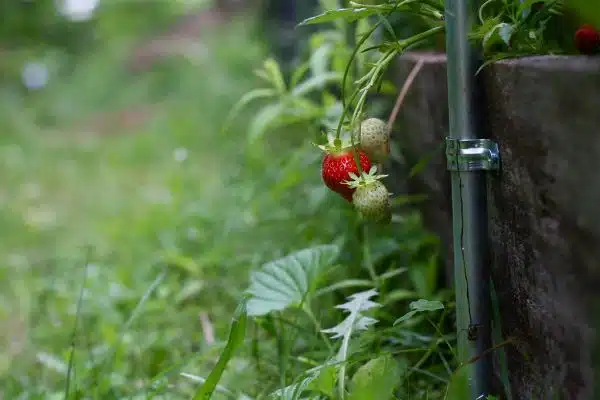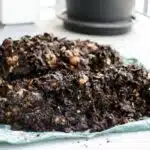Renovating strawberry beds is a crucial aspect of maintaining a healthy and productive garden. Proper care and maintenance can ensure that your strawberries thrive, producing bountiful harvests year after year. However, many gardeners struggle with the best practices for renovating their strawberry beds, which can lead to poor yields and unhealthy plants.
In this article, we will explore the key steps involved in renovating strawberry beds to help you achieve optimal growth and production from your plants. From assessing the health of your existing plants to preparing your soil and selecting the right cultivars, we will provide expert advice on how to ensure that your strawberries are healthy and vibrant. Whether you are a seasoned gardener or just starting out, this guide will give you the tools you need to create a thriving strawberry bed that produces delicious fruit for years to come.
The Benefits Of Renovating Strawberry Beds
Strawberries are a popular fruit for both home gardeners and farmers. Renovating strawberry beds is essential to maintain healthy plants and maximize the yield of the crop. The benefits of this process include increased productivity, disease prevention, and improved plant vigor.
One of the best practices for renovating strawberry beds is to remove old leaves and stems from the plants. This step helps prevent diseases by removing any infected parts that may have accumulated over time. Additionally, removing old growth allows new leaves and stems to grow unimpeded, leading to improved plant vigor.
Another benefit of renovating strawberry beds is that it promotes increased productivity. By thinning out the plants, you can create more space for each one to grow, which can lead to larger berries. As well as this, pruning encourages more flowers to develop on the remaining healthy plants resulting in a higher yield.
In conclusion, there are numerous benefits associated with renovating your strawberry beds. By using best practices such as removing old leaves and stems, thinning out plants promoting increased productivity while preventing diseases you can improve plant vigor leading to healthier strawberries, ultimately resulting in a greater harvest. In the next section, we will assess the health of your existing plants before proceeding with renovation techniques.
Assessing The Health Of Your Existing Plants
Before starting your strawberry bed renovation, it is important to assess the health of your existing plants. Assessing plant vitality is crucial because it will inform you on whether to keep, discard or replace them. A healthy plant should have good foliage color, firm fruit, and a vigorous growth habit. You can assess plant vitality by looking at the overall plant appearance and examining the roots.
Identifying common diseases is also critical in assessing plant vitality. Common diseases such as powdery mildew, verticillium wilt, and root rot are prevalent in strawberry plants. Powdery mildew appears as a white powdery substance on the leaves and fruit, while verticillium wilt causes yellowing and wilting of leaves. Root rot causes blackening and decay of roots leading to stunted growth or death of the plant. Identifying these diseases early will help prevent further spread of infections.
In addition to assessing plant vitality and identifying common diseases, it is essential to remove any weeds or debris that may be present in the bed area. These can harbor pests and diseases that can cause damage to your strawberries. By removing them before planting new strawberries, you are creating an optimal environment for your new plants to grow healthily.
Moving forward with preparing the soil for renovation begins with knowing what type of soil you have in your garden bed area.
Preparing The Soil For Renovation
As the saying goes, “out with the old and in with the new,” this is especially true when it comes to renovating strawberry beds. Before planting new strawberries, it’s essential to assess the health of existing plants to determine if they have any nutrient deficiencies or diseases that could affect future crops. Soil testing is an excellent way to gauge nutrient levels and pH, ensuring that the soil has adequate nutrients for healthy plant growth.
When soil testing, it’s crucial to check for nutrient deficiencies such as nitrogen, phosphorus, and potassium. Nitrogen is essential for leafy growth, while phosphorus promotes root development and fruit production, and potassium helps plants resist disease. If there are any nutrient deficiencies present in the soil, amending with organic matter or fertilizer can help improve soil quality for optimal plant growth.
Preparing the soil is a vital step in renovating strawberry beds. After assessing the health of existing plants and addressing any nutrient deficiencies, removing old plants and debris is necessary to prevent disease from spreading. Clearing out weeds and debris will also make room for new plants and ensure that they have access to adequate sunlight and nutrients. With proper preparation, renovating strawberry beds can be a rewarding process that leads to a bountiful harvest of delicious strawberries.
Removing Old Plants And Debris
Once the growing season has come to an end, it is time to remove old plants and debris from strawberry beds. Removing debris such as leaves, weeds, and any fallen fruit before it decomposes will help prevent the spread of diseases and pests. It will also reduce the likelihood of mold growth in the soil.
One useful technique for disposing of debris is composting. Composting benefits both the environment and your garden by providing nutrient-rich soil amendments that can be used to fertilize future crops. To create a simple compost pile, mix equal parts “brown” materials such as dried leaves or straw with “green” materials like grass clippings or kitchen scraps. Water the pile occasionally and turn it over every few weeks to promote decomposition.
Properly disposing of old plants is crucial for maintaining healthy strawberry beds. Once all debris has been removed and properly disposed of, it is time to move on to pruning and trimming the remaining plants. This step is essential for encouraging new growth and ensuring a bountiful harvest in the coming season.
Pruning And Trimming
Selective pruning is an essential step in renovating strawberry beds. This process involves removing dead or damaged leaves, as well as crowns that are too old or diseased. Gardeners must be careful not to damage the healthy parts of the plant when pruning. Selective pruning should be done during the dormant period, which occurs after the last harvest and before new growth begins.
Timing considerations are crucial when it comes to pruning and trimming strawberry plants. Late summer and early fall are ideal periods for cutting back runners and removing any remaining fruit. During this time, gardeners can also remove dead leaves and tidy up the bed before winter sets in. If left unpruned, strawberry plants become overcrowded, leading to poor fruit quality and yield.
To ensure successful renovation of strawberry beds, here are some helpful tips:
- Use sharp shears or scissors when pruning to avoid damaging healthy plants.
- Remove dead leaves and runners regularly throughout the growing season.
- Cut back all foliage after harvesting in late summer/early fall to promote healthy growth come spring.
By following these tips for selective pruning and timing considerations, gardeners can look forward to a bountiful harvest of delicious strawberries next year. The next step in renovating strawberry beds is amending the soil with compost, which will be discussed in detail in the subsequent section.
Amending The Soil With Compost
Have you ever looked at your strawberry beds and thought, “Wow, this soil could really use some help”? If so, fear not! There is a simple solution that can greatly benefit the health and productivity of your plants: amending the soil with compost.
Benefits of Amending Soil with Compost: Compost is a fantastic organic material that can provide numerous benefits to your garden. Adding compost to your strawberry beds can improve the soil structure, increase nutrient availability, and enhance water retention. It also promotes beneficial microbial activity in the soil, which helps break down organic matter and release nutrients for plant uptake. Furthermore, compost acts as a natural fertilizer by providing slow-release nutrients throughout the growing season.
Techniques for Incorporating Compost into Your Soil: To incorporate compost into your strawberry beds, there are a few techniques you can use. One option is to spread a layer of compost over the top of the soil and mix it in with a garden fork or tiller. Another technique is to create planting holes where you will be placing your strawberry plants and fill them with a mixture of compost and soil before planting. You could also apply compost as a side dressing around existing plants throughout the growing season.
Now that you know about the benefits of amending soil with compost and different techniques for incorporating it into your strawberry beds, it’s time to move on to fertilizing your plants. By providing proper nutrition in addition to healthy soil, you’ll be sure to have productive and tasty strawberries all season long.
Fertilizing Your Plants
- Fertilizing your plants is a great way to ensure that they receive the right nutrients to stay healthy and grow.
- There are a variety of fertilizers available, such as organic or synthetic fertilizers, each with different pros and cons.
- Fertilizer application should be done according to the manufacturer’s instructions, taking into account the plant’s needs and the soil’s characteristics.
- Nutrient deficiencies can be identified by observing the plant’s leaves and stems, as well as soil analysis.
- In order to renovate strawberry beds, it is important to select the right fertilizer for the job and apply it correctly.
- The quantity of fertilizer should also be taken into account to avoid over-fertilization, as it can be detrimental to the health of the plants.
Types Of Fertilizer
As a horticultural expert, I know that fertilizing your plants is essential for their growth and development. When it comes to strawberry beds, choosing the right type of fertilizer can make all the difference. The two main types of fertilizer are organic and synthetic, each with its own advantages and disadvantages.
Organic fertilizers are made from natural materials such as composted manure, bone meal or fish emulsion. They are slow-release, providing nutrients over a longer period of time. Organic fertilizers also improve soil structure and encourage beneficial microorganisms in the soil. On the other hand, synthetic fertilizers are chemically manufactured and provide an immediate nutrient boost to plants. They are often more concentrated than organic fertilizers but can also be harmful if overused.
Another important aspect of fertilizing strawberry beds is timing. Fertilizer should be applied at the right time to maximize its effectiveness and minimize any potential harm to the plants. For example, applying fertilizer in early spring before blooms appear will promote leafy growth while applying it after fruit set will encourage more berries to form. It’s important to follow manufacturer instructions when applying fertilizer and not to exceed recommended rates.
In conclusion, choosing the right type of fertilizer and timing its application can greatly benefit your strawberry beds’ growth and yield. Whether you opt for organic or synthetic options depends on your personal preferences and gardening practices. However, following best practices for application will ensure your plants receive adequate nutrition without causing harm or damage to them.
Fertilizer Application
Fertilizer application is an essential aspect of maintaining healthy and productive plants. When it comes to fertilizing your plants, using the right type of fertilizer at the optimal time can make all the difference. Organic alternatives to synthetic fertilizers are becoming increasingly popular due to their sustainable and eco-friendly nature. They are made from natural materials like composted manure, bone meal or fish emulsion, which slowly release nutrients over an extended period of time.
The optimal timing for fertilizer application varies depending on the plant’s growth stage and type of fertilizer used. For example, in early spring before blooms appear, applying fertilizer will promote vegetative growth while applying it after fruit set will help develop more berries. It’s crucial to follow manufacturer instructions when applying fertilizer and not exceed recommended rates as this may harm or damage your plants. Using a soil testing kit can also help determine the nutrient needs of your soil, giving you a better idea of how much fertilizer to apply.
In conclusion, proper application of organic alternatives at the optimal time is crucial for achieving maximum benefits from fertilizers without causing any harm or damage to your plant’s growth and yield. Understanding the basic principles of fertilizer application can help gardeners maintain healthy and productive gardens while being mindful of sustainability practices.
Nutrient Deficiencies
As a gardener, it’s essential to be aware of the signs of nutrient deficiencies in plants. Diagnosing nutrient deficiencies can be challenging as they often present similar symptoms, making it necessary to conduct soil testing for deficiencies. Soil testing is an effective way to determine which nutrients are lacking in your soil and how much fertilizer you need to apply.
One common nutrient deficiency seen in plants is nitrogen deficiency. Plants with nitrogen deficiencies show stunted growth, yellowing of leaves, and reduced foliage. This type of deficiency can be corrected by using organic fertilizers that contain high levels of nitrogen. It’s crucial to avoid over-fertilizing your plants as an excess amount of nitrogen can lead to unwanted growth and produce fewer flowers or fruit.
Another common nutrient deficiency is phosphorus deficiency, which often results in discolored leaves and poor root development. Organic fertilizers containing bone meal or rock phosphate are suitable for correcting phosphorus deficiencies in plants. Applying too much phosphorus fertilizer can damage plant roots and reduce the uptake of other essential nutrients like zinc, iron, and copper.
In summary, recognizing the signs of nutrient deficiencies in plants is crucial for maintaining healthy gardens. Conducting soil testing for deficiencies helps determine the right type and amount of fertilizer necessary to correct the issue. By understanding nutrient deficiencies and their corresponding solutions, gardeners can ensure their plants receive optimal nutrition without causing any harm or damage to their growth and yield.
Mulching For Weed Control And Moisture Retention
Mulching techniques are essential for maintaining healthy and productive strawberry beds. Mulch serves as a protective layer that helps regulate soil temperature, prevent moisture loss, and control weed growth. There are various types of mulch materials available, including straw, leaves, grass clippings, and wood chips. When applying mulch, it is important to spread it evenly over the entire bed to a depth of 2-3 inches.
Organic weed control is another crucial aspect of maintaining healthy strawberry beds. Weeds compete with strawberries for nutrients and water and can significantly reduce yields if not managed properly. Hand weeding is an effective method for removing weeds but can be time-consuming and labor-intensive. Alternatively, organic herbicides or homemade weed killers made from vinegar or saltwater solutions can also be used to control weeds without harming the environment or strawberry plants.
By using mulching techniques and organic weed control methods in your strawberry garden, you can ensure your plants receive optimal growing conditions while minimizing the use of harmful chemicals. These practices will help maintain soil moisture levels, reduce weed growth, and promote overall plant health. In the following section, we’ll discuss how to choose the right cultivars for your region to further enhance your strawberry growing success.
Choosing The Right Cultivars For Your Region
Strawberry beds should be renovated every 3-4 years. Cold-hardy cultivars are recommended for northern climates, as they are able to withstand temperatures below freezing. Heat-tolerant cultivars are recommended for warmer climates, as they are able to withstand higher temperatures without suffering from heat stress. Consideration should be given to the specific climate of the region when choosing the right cultivars for a strawberry bed.
Cold-Hardy Cultivars
Choosing the right cultivars for your region is an important step when it comes to renovating strawberry beds. Gardeners must select varieties that are well-suited for the climate in which they live. Cold-hardy cultivars are particularly relevant for regions that experience harsh winters, as they can survive low temperatures and still produce high-quality berries.
When choosing varieties, gardeners should also consider planting techniques. For instance, planting strawberries in raised beds or using mulch can help protect them from frost damage. Additionally, selecting cultivars with a longer fruiting season can ensure a steady supply of fresh berries throughout the growing season.
Overall, selecting cold-hardy cultivars is just one aspect of choosing the right varieties for your region when renovating strawberry beds. By considering factors such as planting techniques and fruiting season, gardeners can ensure a successful harvest year after year.
Heat-Tolerant Cultivars
Another important factor to consider when selecting strawberry cultivars is their heat tolerance. For regions with high temperatures, it is crucial to choose varieties that can thrive in such conditions. Heat-tolerant varieties are best suited for areas with long, hot summers and mild winters. These cultivars have adapted to warmer growing conditions and can produce high-quality berries even in the heat.
To ensure the best growing conditions for heat-tolerant varieties, gardeners should also consider planting techniques. Using raised beds or mulch can help regulate soil temperature and prevent moisture loss during hot weather. Additionally, regular watering and fertilization can help keep plants healthy and productive throughout the season.
Overall, selecting heat-tolerant cultivars is another essential aspect of choosing the right varieties for your region when renovating strawberry beds. By considering factors such as planting techniques and growing conditions, gardeners can create an optimal environment for these varieties to thrive and produce a bountiful harvest year after year.
Planting Your New Strawberry Plants
The next step in renovating your strawberry beds is to plant new strawberry plants. Planting techniques are crucial in ensuring that the plants establish themselves well and produce a bountiful harvest. Firstly, choose a sunny location with well-drained soil for planting. Avoid areas where strawberries have been grown previously as this increases the risk of disease and pests.
Soil preparation tips are essential for healthy plant growth. Before planting, remove any weeds or debris from the soil. Add compost or organic matter to improve soil structure and fertility. It’s also important to ensure that the soil pH is between 5.5-6.5, as strawberries prefer slightly acidic soil.
Now that you have prepared your soil, it’s time to plant your new strawberry plants! Dig holes large enough to accommodate the roots of each plant, making sure not to overcrowd them. Water the plants thoroughly after planting and add a layer of mulch around them to help retain moisture and prevent weed growth. With proper planting techniques and soil preparation tips, your new strawberry plants will thrive and produce sweet, juicy berries for many years to come.
As you prepare to move on to watering and irrigation, it’s important to note that proper moisture management is key in maintaining healthy strawberry plants. Overwatering can lead to root rot while under-watering can cause stress on the plants leading to poor fruit production. Therefore, in the next section, we will discuss effective watering techniques for your newly planted strawberries.
Watering And Irrigation
Watering and Irrigation:
Proper watering and irrigation are essential for the growth and productivity of strawberry plants. Drip irrigation is a great option for strawberry beds. This method can save water by delivering it directly to the roots of the plants, minimizing evaporation. A drip irrigation system can also reduce weed growth by keeping water off the soil surface where weed seeds germinate.
Raised beds are ideal for drip irrigation systems because they provide better drainage, which is necessary for healthy strawberry plants. Raised beds also make it easier to install and maintain a drip irrigation system. When installing a drip irrigation system in a raised bed, be sure to space the emitters evenly along the length of each row. This will ensure that each plant receives an equal amount of water.
Remember that overwatering can be just as damaging as underwatering. Monitor soil moisture regularly and adjust your watering schedule accordingly. A well-maintained drip irrigation system in a raised bed can help you achieve healthy, productive strawberry plants.
Transition: With proper watering and irrigation in place, we now need to focus on protecting our strawberry plants from pests and diseases.
Pest And Disease Control
After successfully managing the watering and irrigation of your strawberry beds, it’s time to turn our attention to renovating them for optimal crop production. Let’s consider a hypothetical example: you’ve noticed that your strawberry plants have started to produce smaller fruits, and the overall yield seems to be declining year after year. This is a sign that your beds may need renovation.
The first step in renovating strawberry beds is to remove old or dead plant material and weeds. This will help improve air circulation and reduce competition for nutrients. Next, you should thin out the remaining plants by removing any weak or diseased ones. This will give the healthier plants more space to grow and produce bigger fruits. Finally, you can add compost or other organic matter to replenish soil nutrients and improve soil structure.
Integrated pest management (IPM) techniques should also be incorporated when renovating strawberry beds. IPM involves using a combination of cultural, biological, and chemical methods to manage pests in an environmentally sustainable way. Some common pests of strawberries include aphids, spider mites, and thrips. By monitoring for early signs of infestation and implementing IPM strategies before populations get out of control, you can minimize damage to your crops without relying solely on pesticides.
As you monitor growth and progress in your renovated strawberry beds, remember that regular maintenance is key to ensuring healthy plants and high yields. This includes fertilizing as needed throughout the growing season, pruning runners as they appear, and keeping up with weed control. With proper care, your renovated strawberry beds can provide delicious fruits for years to come.
Monitoring Growth And Progress
To ensure the success of your strawberry beds, it is important to monitor their growth and progress. One key factor to pay attention to is the amount of sunlight they are receiving. Assessing sunlight is crucial as strawberries require at least six hours of direct sunlight daily to thrive. Therefore, it is recommended to place your strawberry beds in a location that receives ample sunlight throughout the day.
Another way to monitor your strawberry beds is by using raised beds. Raised beds provide excellent drainage, which helps prevent waterlogging that can lead to root rot and other fungal diseases. Additionally, they allow for better monitoring and control over soil quality and pH levels. By using raised beds, you can easily adjust the soil conditions if necessary based on any changes in plant growth or nutrient deficiencies.
By continually monitoring your strawberry beds, you can easily identify any issues that may arise and make necessary adjustments before they become major problems. This will help ensure healthy plant growth and maximum yield come harvest time. In the next section, we will discuss how to properly harvest and preserve your strawberries for optimal enjoyment all season long.
Harvesting And Preserving Your Strawberries
As your strawberry plants continue to grow and thrive, it’s important to start thinking about how you can maintain the health of your bed over time. While you’ll want to focus on harvesting the ripe fruit as it appears, there are also some key techniques for preserving your strawberries that can help you enjoy their sweet flavor long after the growing season has ended.
One popular method for preserving strawberries is through freezing. To freeze strawberries, simply wash them thoroughly and remove the stems before placing them in a freezer-safe container or bag. Some gardeners like to add sugar or syrup to their frozen berries, while others prefer a bit of lemon juice for added tartness. Once frozen, these berries can be used in smoothies, pies, or other recipes throughout the year.
Another great way to preserve your strawberries is by making jams or jellies. There are countless recipes available online and in cookbooks that cater to different tastes and preferences. Whether you prefer a classic strawberry jam or something with a bit of spice, there’s sure to be a recipe out there that will suit your needs. By canning your jams and jellies properly, you’ll be able to enjoy them for months on end.
Looking ahead, one key factor in maintaining a healthy strawberry bed is regular pruning and thinning of plants as they grow. It’s important not to overcrowd your bed with too many plants, as this can lead to poor air circulation and increased risk of disease. Additionally, removing dead leaves and other debris from the bed on a regular basis can help prevent pests from taking hold. By staying vigilant about these maintenance tasks throughout the growing season and beyond, you’ll be able to enjoy fresh strawberries year after year.
Long-Term Maintenance Strategies For A Healthy Strawberry Bed
Maintaining a healthy strawberry bed requires long-term strategies that go beyond the initial renovation process. Companion planting is one effective method to keep your strawberry plants healthy and productive. For example, planting marigolds alongside strawberries can help repel pests such as nematodes and aphids. Additionally, intercropping with nitrogen-fixing plants like clover or beans can provide the necessary nutrients for the strawberries.
Another crucial strategy is crop rotation. This practice involves alternating the type of crops grown in a particular area over several seasons to prevent soil-borne diseases and pests from building up. For strawberries, it’s recommended to rotate them every two to three years with non-related crops such as corn, beans or lettuce. Crop rotation also helps improve soil quality as different crops have varying nutrient demands which help build up soil structure.
In summary, maintaining a healthy strawberry bed involves implementing long-term strategies such as companion planting and crop rotation. These practices are essential in preventing pest infestations and soil-borne diseases that can weaken or kill off your plants. By incorporating these methods into your garden management plan, you’ll be able to enjoy delicious and bountiful strawberries for years to come.
Conclusion
Renovating strawberry beds is an essential task for any gardener to ensure healthy and productive plants. The benefits of renovation include the removal of old and diseased plants, the promotion of new growth, and the rejuvenation of soil nutrients. Before starting renovations, it’s important to assess the health of existing plants and prepare the soil by adding organic matter such as compost.
Removing old plants and debris is a crucial step in getting rid of pests and diseases that may have infected your strawberry bed. Pruning and trimming are also necessary to promote new growth and remove dead or damaged foliage. Pest control measures should be taken to prevent future infestations, while regular monitoring is required to track progress.
Harvesting your strawberries at their peak ripeness is a gratifying experience, but it’s equally important to preserve them for long-term enjoyment. Strategies such as freezing or canning can extend their shelf life considerably. Long-term maintenance strategies like mulching and fertilizing will keep your strawberry bed healthy throughout the growing season.
In conclusion, renovating your strawberry bed involves various steps that require careful attention to detail. By following these suggested guidelines from a horticultural expert or garden consultant, you can maintain healthy plants with abundant yields year after year. Remember, investing time in proper care and maintenance will pay off beautifully in the form of delicious fruit come harvest time!
Image Credits
- “Strawberries in Raised Bed” by Chiot’s Run (featured)





























